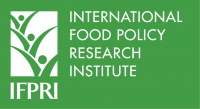The Challenge of Increasing Agricultural Productivity in Africa South of the Sahara

- Cocoa
- Coffee
- Fertilizer
- Input Markets
- Ethiopia
- Kenya
- Malawi
- Mozambique
- United Republic of Tanzania
- Zambia
- Zimbabwe
Related blog posts
The following post by IFPRI senior researcher Alejandro Nin Pratt was originally published on ASTI News and Notes .
Although Africa south of the Sahara (SSA) has significantly improved its agricultural performance since the mid-1990s, debate is ongoing as to whether the region will be able to withstand growth in the coming years. In particular, the region’s agricultural productivity growth continues to lag behind the rest of the world, growing at roughly half the average rate for developing countries; growth in land and labor productivity has been modest; growth in cereal yields is still low in almost all countries; and fertilizer use remains very low. Two recently released IFPRI discussion papers offer new possible explanations for the puzzling phenomenon of agricultural growth in SSA.
The first paper, Inputs, Productivity, and Agricultural Growth in Africa South of the Sahara , finds productivity to be the main driver of agricultural growth in SSA in recent years. In the case of poorer countries with low labor productivity and low input use per worker, increased productivity resulted from increased input-use efficiency. Countries with higher output and input per worker also increased their input-use efficiency, but in addition they benefited substantially from the adoption of technologies developed elsewhere.
One reason why poor countries with low input levels per worker find it more difficult to benefit from new technologies may be that these technologies require a very different input mix that the one used by producers in poor countries. Advanced countries develop technologies compatible with their own input mix (such as high levels of capital and chemical inputs per worker), but such technologies are less effective in poor countries where the input mix is very different (low levels of capital per worker and intensive labor). Advanced countries using the most productive input mix can produce 60 percent more output per unit of input than SSA countries, and these differences could increase in the future.
The second paper, Agricultural Intensification in Africa: A Regional Analysis , focuses on the role of fertilizers in the various intensification pathways that SSA countries follow. Results indicate that differences in agricultural growth patterns are driven by relative land and labor abundance and are affected by the region’s differing agroecologies. Countries with low population density (half the countries in SSA) increased output by expanding crop production into new land area, reducing fallow periods, and increasing double-cropping. The contribution of increased land productivity to output growth in these countries is low, and fertilizer use per hectare has not risen. In these countries, fertilizer seems to be used to expand crop land but not to increase yields.
On the other hand, countries with high population density show a substantial contribution of land productivity to output growth and a positive but low correlation between land productivity and fertilizer use. A possible explanation for this is the differing agroecologies of the countries with high population density. For example, root and tree-crop systems require lower levels of fertilizer than cereal-based systems. The importance of root and tree-crop systems in countries with the highest levels of population density (Burundi, Nigeria, Rwanda, and Uganda) could explain their relatively low level of fertilizer use compared with countries with cereal-based production systems (such as Ethiopia, Kenya, and Malawi). Of the total land suited for crop production in SSA only 18 percent is better suited to cereals than to root and tree crops, and 70 percent of that land is located in Ethiopia, Mozambique, Tanzania, Zambia, and Zimbabwe.
Results outlined in these two papers offer significant implications for policy, as they show that the slow pace of technology adoption and productivity growth in SSA could be because the available technologies are inappropriate to local conditions and the low levels of capital available. First, in areas suitable for cereal production, low population densities make advanced technologies inappropriate unless complemented with capital investment to increase labor productivity. The best strategy for these countries appears to be labor-saving technologies that accelerate the incorporation of new land into production and create incentives for increased fertilizer use as countries approach their land frontier. Second, labor-intensive technologies are best placed to succeed in countries like Ethiopia, Kenya, Malawi, and Uganda because more than 60 percent of their potential agricultural land is located in favorable agroecologies with high population densities. For those agroecologiesproducing root and tree crops like cassava, plantains, cocoa, and coffee, Africa will need to develop its own Green Revolution. This will require more investment in agricultural R&D because tropical crops benefit less from research by high-income countries, which generally focuses on crops and livestock production for temperate climates.
It is hoped that this research will contribute to bring a new perspective on the appropriateness of technology choices to the ongoing debate taking place in SSA.
